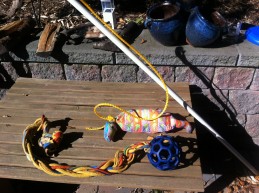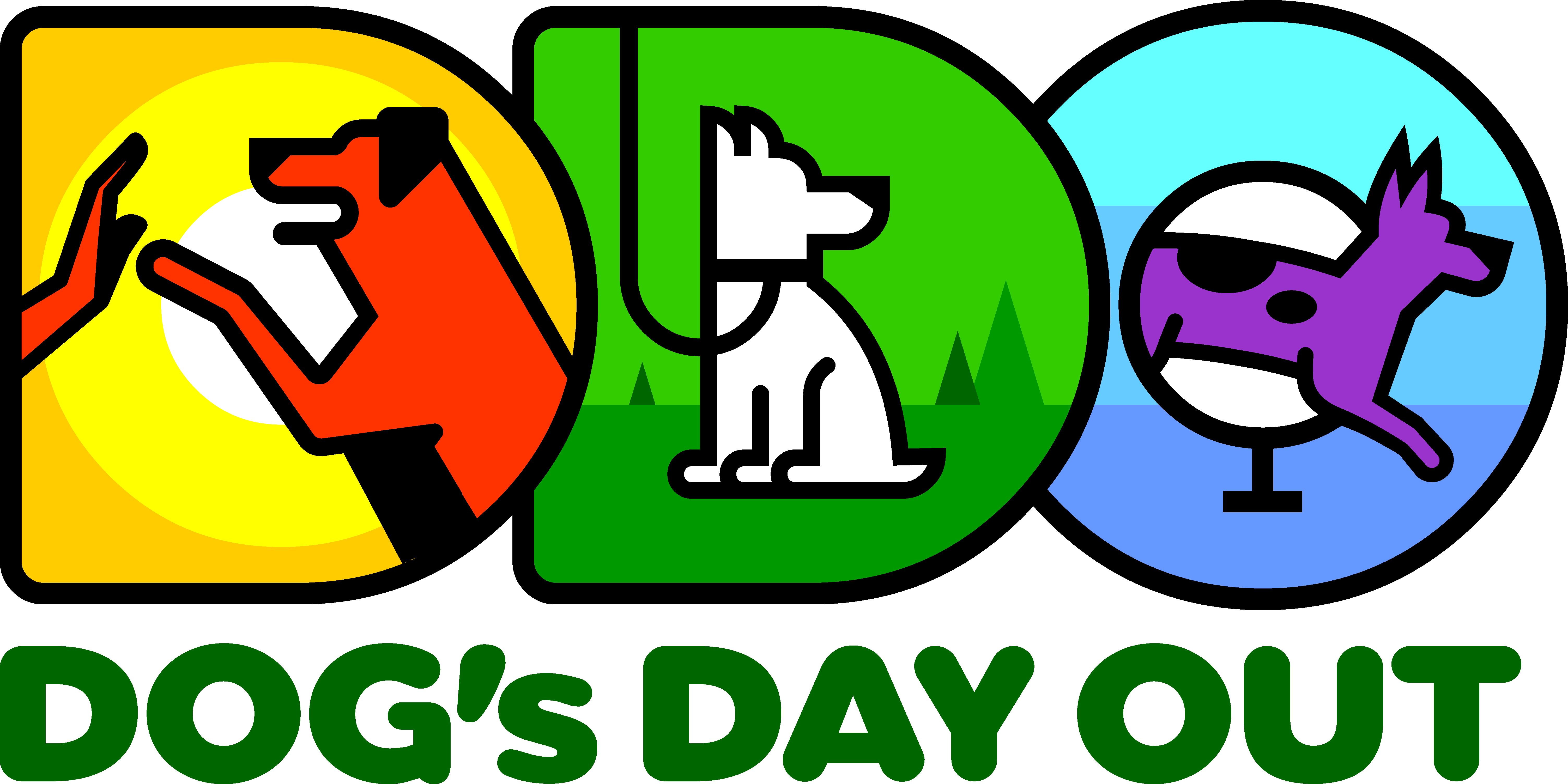When I am working with dogs I use a lot of food rewards. I use food because food works. Food is an extremely powerful motivator because it is a primary reinforcer. We (our dogs and ourselves) are all “food motivated.” If we did not eat, we would die. How’s that for motivation? When folks tell me their dog is not food motivated my first question is “how do you feed them?” The usual answer is “well, I just leave a bowl of food out.” Why would your dog be motivated by your measly little treat when he can just go over to a giant bowl of food anytime? When they take away the free-feeding the dog miraculously becomes “food motivated.” So, food works. BUT…
There is another strong motivator that a lot of us tend to forget about – PLAY! Unfortunately, once we are over the age of ten, many of us humans seem to forget just how great it feels just to have FUN and PLAY. Dogs and humans are two of the few species that actually continue to play with objects as adults (basketball, soccer, tennis anyone?). Why not exploit this commonality by spending time with our dogs having some fun and teaching them something to boot?
Here are just a few ways we can use toys and fun…
1. Fetch
Fetch is a near perfect game. It teaches your dog to “come” to you and “drop” things for you while at the same time giving him a great workout. It is also a great way to bond with your dog because it is an interactive game, two players needed! Instinctually, many dogs will run after/chase anything small and moving (some dogs with a stronger want for this than others). The tricky part of fetch is bringing the object back and giving it up. It’s true that some dogs are “naturals” at fetch while others need a little help in coaxing them into the game.
For those that need a little encouragement, I start by tossing an object I think the dog likes (ball, stuffed toy) not too far away, maybe only 5 feet. Next, I get very animated (i.e. look silly and ridiculous) while luring him back to me, waving a delicious treat at his face if need be. When he reaches me, I say “drop” while holding the treat in front of his nose and click/treat for the drop. Eventually, for most dogs, you can phase out the treat reward because the game (and getting the ball) itself becomes the reward.
Repeat, gradually extending the distance of the throw. I try to end the game before the dog gets bored; initially, you may only do 3 or 4 tosses. When I first began teaching my dog Rufus how to fetch I found that after about 3 throws he would just take the ball out, lay down with it and start chewing on it SO, we went to 2 tosses and quit. He still is not a “crazy, fetch dog” but he will now play for a good 20 or so throws before getting bored. In that 20 toss session he has practiced “come” and “drop,” been exercised and had a great time playing with me.
One warning… there are dogs that can become quite obsessive about fetch and for those dogs, I (rarely) may recommend you actually stop playing fetch (at least for a while) with your dog. The game of obsessive fetch may be more harmful than beneficial for some of these dogs’ brains. Definitely consult a professional if you have questions about this. An experienced certified behavior consultant or a veterinary behaviorist would be my go to if you have concerns about this.
2. Tug of War
People used to be afraid of playing tug. We were told it was a “dominance game” and that the human “always has to win.” Luckily, science has now proven all that as well, hogwash. Yippee, ‘cause tug is fun! It is also a fantastic energy outlet for high-energy dogs and a great way to work on your dog’s impulse control. Since I use tug for a lot of enthusiastic dogs I do put some guidelines into place so that it doesn’t get too out of hand…
Have a specific toy you use for tug. Keep it out of his reach unless you are engaged in the game. This makes the object more desirable (it’s not always just hanging around) and it is connected with the game of tug. This way, your dog will associate this item with the game and will not pick up random toys/items and try to get you to tug. Your tug toy should be fairly long, at least 2ft (the bigger your dog, the longer his tug toy should be) to avoid any accidental mouth on arm.
Make sure your dog knows how to “drop” or “out” before engaging in tug. Fetch is a fantastic way to teach this (see above!). Also, practice exchanging items with your dog. Start by always offering your dog something of higher value so that he wants to drop things for you.
Here are the steps for a tug game:
- Cue your dog to SIT (or DOWN, whatever you would like to work on)
- Cue your dog to WAIT
- Wave the tug around while saying LEAVE IT. It your dog pops up at this point ask him to SIT and WAIT again. If you see him stop himself from getting up be sure to praise him with “good!”
- Tell your dog TAKE (and let him grab the toy!). Tug for a bit and then…
- Cue DROP. If you need to wave a high value treat under his nose to get him to drop the tug that is OK.
- Start all over again!
If mouth touches skin, game over. Simply (and calmly) put the toy away and stop playing. You can start again in a few minutes.
As you can see, one game of TUG teaches your dog FIVE cues (sit, wait, leave it, take and drop) and a whole lot of impulse control!
3. Toy as distraction
Some dogs just aren’t that polite when people come into your home. My dog Rufus included; he is a bit too friendly and wants to greet everyone with a giant lick on their face as they enter. Unfortunately, in order to do that, he must jump on them and 50 pounds of doggie-bowling-ball coming at you (even friendly) certainly isn’t enjoyable or appropriate.
Instead, teach your dog to grab a toy when people enter. You can toss it to him just as guests come in. You may be surprised how effective this simple “trick” can be. Most dogs will prance around with the toy in their mouths but will not jump AND won’t bark because their mouth is stuffed with toy! Magic.
This is not to be used for dogs that are aggressive with people entering, rather the friendly but obnoxious types.
4. Tricks
When you get bored of all those “sits”, “downs” and “leave-its”, spice up your training with a little fun and games. Teaching your dog simple tricks can be a great way to keep your dog (and yourself) interested. Start with a few easy luring or targeting tricks. Also see: My Dog is Not a Robot!
5. The Flirt Pole
Yes, the name of this thing always kinda sounds dirty to me and makes me giggle but it’s a really great play tool. It’s basically a giant cat toy for dogs. Like Fetch, a few rules should be in place before playing (see steps for TUG above) but it’s a fantastic game to both teach your dog impulse control and provide an outlet for particularly “drive-y” dogs. You know one if you have one. No fancy equipment necessary; I have made my own for a grand total of $6. There is a nice little video from BadRap on how to play here: http://vimeo.com/26279876
6. Scent Games AKA K9 Nose Works
You can take a group class or start playing some basic scent games with your dog at home. Some boxes and treats will get you started. Toss a stinky treat in a box and have your dog “FIND IT.” When he get to that box treat more at that spot. Gradually make the game more difficult by taking the dog out of the room, better hiding places – think higher or lower that your dog’s nose or toss your dog’s dinner in the back yard and have him “FIND IT!” Here’s what’s great about this – any dog can do this! Our dog’s sense of smell is so much greater than ours; I can’t imagine how it must be for them. Dogs need mental stimulation as much as physical! More info on K9 Nose Work classes here: http://dogsdayoutseattle.com/k9-nosework/
We know that if dogs can eat or play they can learn. These are just a few ways to have a great time playing with your dog while at the same time getting the added bonus of teaching them a thing or two. Who doesn’t want to have fun? Go get out there and PLAY WITH YOUR DOG! For even more ideas for play check out out Pinterest board on Games & Enrichment.

For more ideas, see also: Variety is the Spice of Life, Rainy Day Enrichment and Creative Feeding.
Homemade Flirt Pole and Tug Toy. No big bucks spent here folks!
